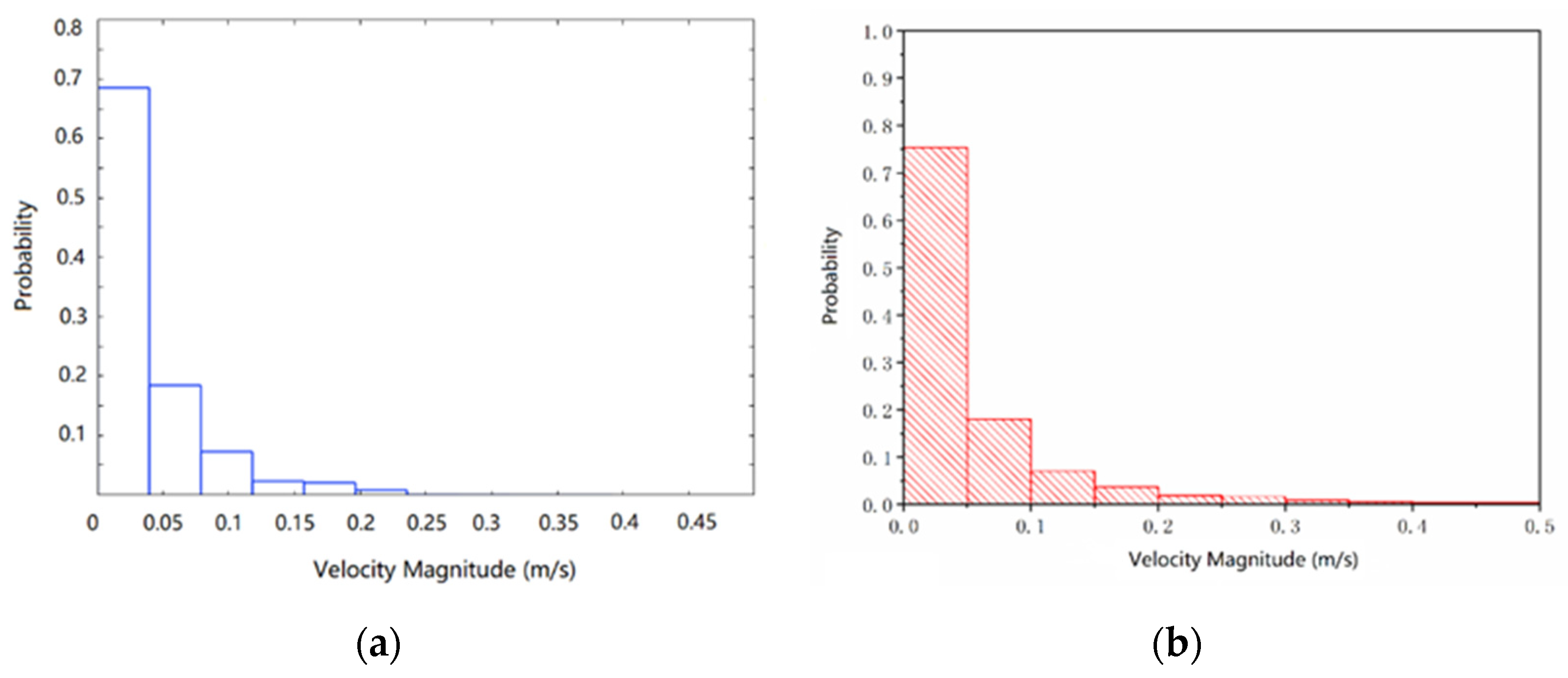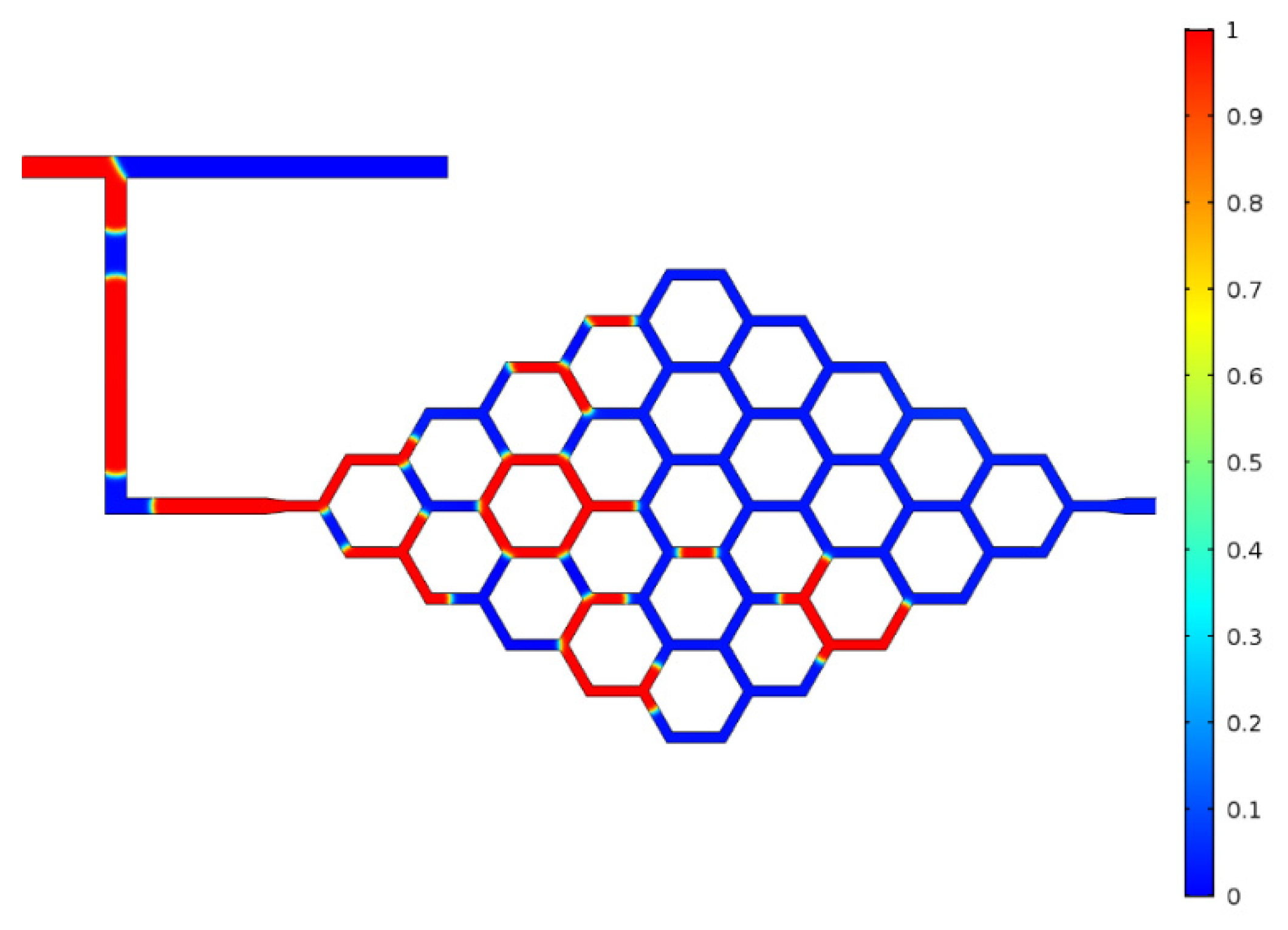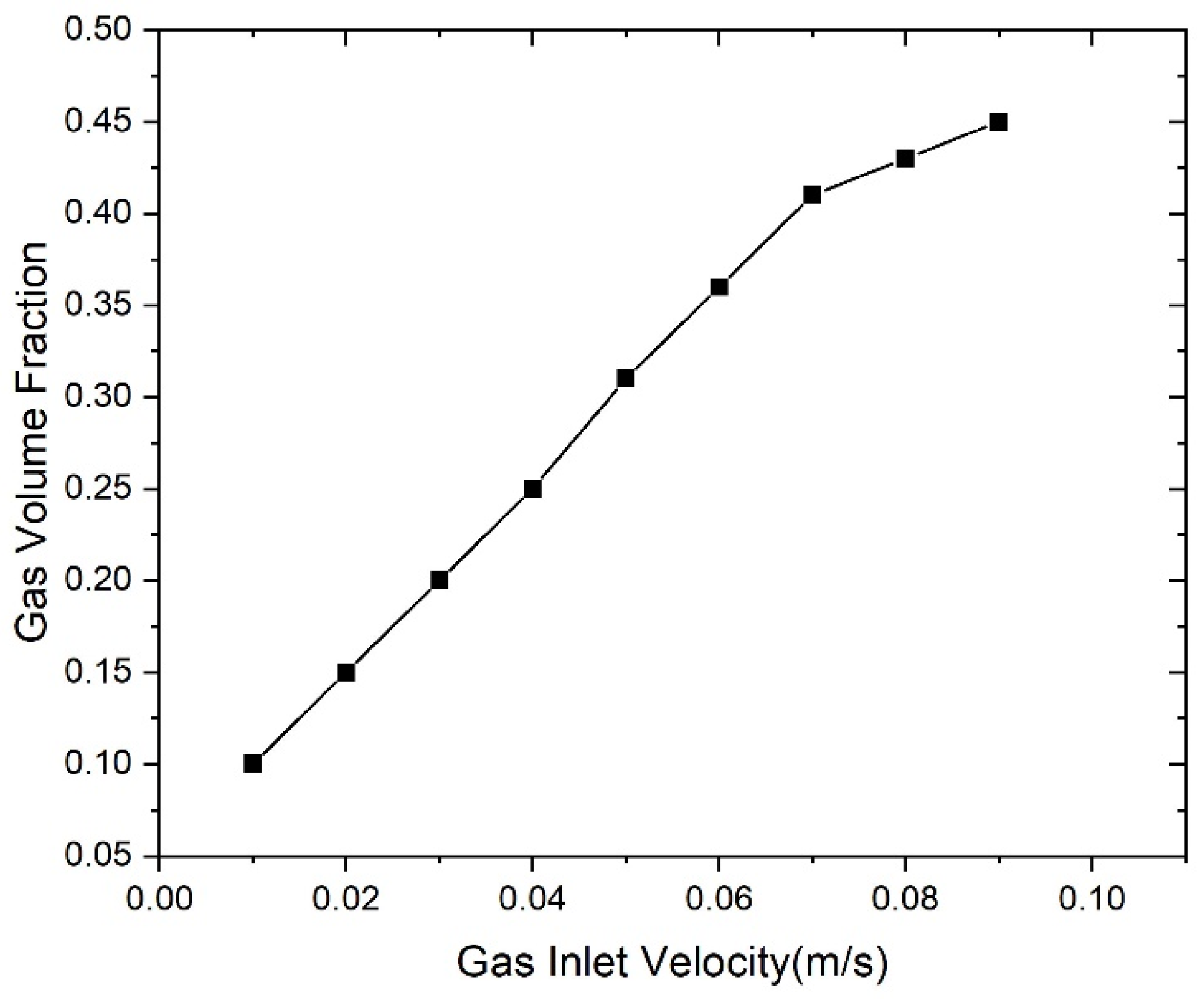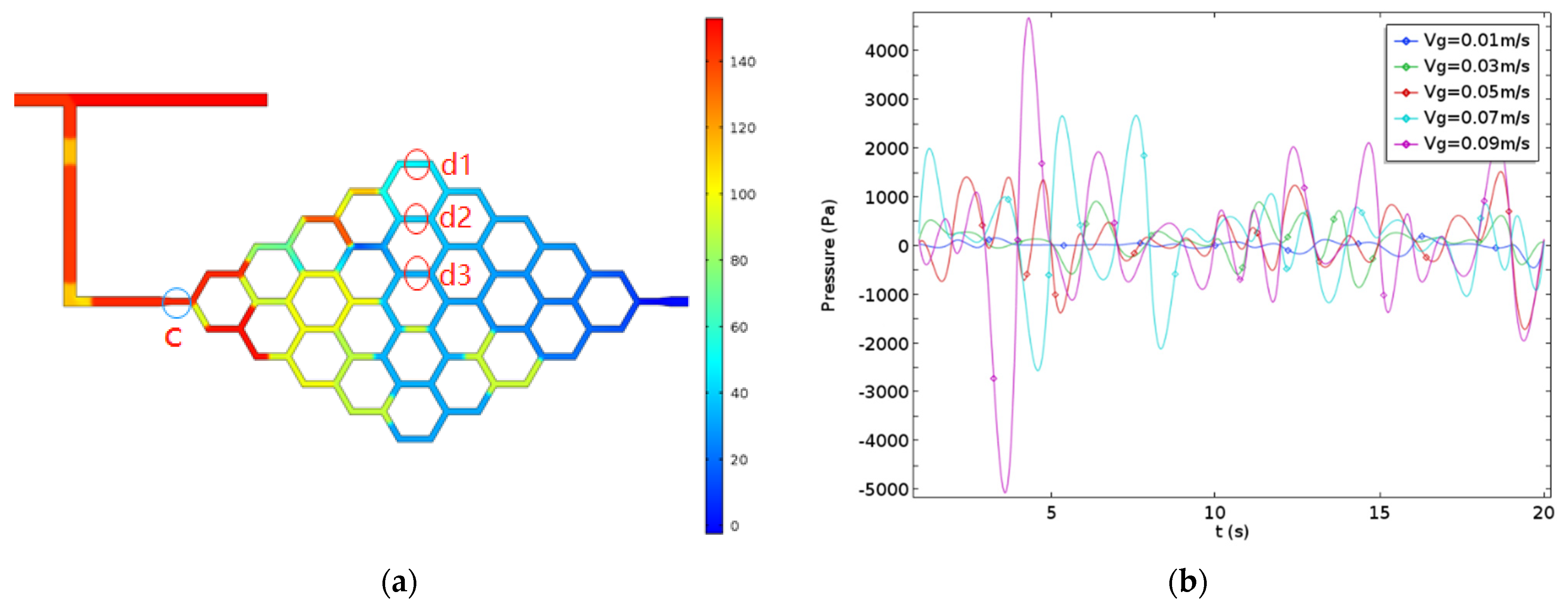
| Version | Summary | Created by | Modification | Content Size | Created at | Operation |
|---|---|---|---|---|---|---|
| 1 | Jie Zhang | + 1652 word(s) | 1652 | 2022-02-17 07:12:27 | | | |
| 2 | Yvaine Wei | + 2 word(s) | 1654 | 2022-03-02 02:04:32 | | |
Video Upload Options
The microreactor is characterized by large specific surface area, short diffusion transmission path and strong controllability. The pressure distribution inside the microreactor was closely related to the phase distribution. The increasing inlet gas velocity increased the gas phase volume fraction, as well as the gas slug length. Higher gas velocity resulted in stronger turbulence of the liquid phase flow field and a deviation of residence time distribution from normal distribution, but it was favorable to even more residence time during the liquid phase. There also exists a secondary flow in the gas–liquid interface.
1. Introduction
The microreactor can significantly enhance the mass and heat transfer process, providing a clean and safe chemical production environment [1].
2. Model Verification via Micro-PIV


3. Flow Characteristics Analysis


4. Pressure Analysis

5. Residence Time Distribution

6. Conclusions
-
Under current honeycomb configuration, the liquid slug split at the bifurcation randomly, leading to the non-uniformity of the flow in the microreactor. The flow of liquid slug was dominated by the inertial force.
-
The pressure distribution was closely related to the phase distribution. The pressure in the gas phase was higher than that in the nearby liquid phase, and it decreased more slowly along the gas–liquid slug path.
-
The increasing inlet gas velocity promoted the fluctuation of pressure inside the honeycomb microreactor, but the main fluctuation frequency remained unaffected. With the increasing inlet gas velocity, the gas phase volume fraction and the gas slug length increased, while the liquid slug length decreased.
-
Higher inlet gas velocity increased the turbulence in the liquid phase flow field and resulted in the deviation of residence time distribution from normal distribution, leading to a lower variance of the residence time, which was beneficial for practical high throughput applications. In the gas–liquid interface, there was a sudden change of velocity and secondary flow, which was positively correlated with the velocity magnitude, enhancing the micromixing inside the liquid slugs.
-
Vortices and eddy diffusion in the liquid columns are favorable for enhancing the mass transfer inside the liquid.
References
- Jähnisch, K.; Hessel, V.; Löwe, H.; Baerns, M. Chemistry in microstructured reactors. Angew. Chem. Int. Ed. 2004, 43, 406–446.
- Ramzan, M.; Khan, N.S.; Kumam, P. Mechanical analysis of non-Newtonian nanofluid past a thin needle with dipole effect and entropic characteristics. Sci. Rep. 2021, 11, 19378.
- Khan, N.S.; Shah, Q.; Sohail, A.; Kumam, P.; Thounthong, P.; Muhammad, T. Mechanical aspects of Maxwell nanofluid in dynamic system with irreversible analysis. ZAMM J. Appl. Math. Mech. Z. Für Angew. Math. Und Mech. 2021, 101, e202000212.
- Turkyilmazoglu, M. Magnetohydrodynamic Liquid Plug Running in a Micro-Channel: Analytical Solutions. J. Biomech. Eng. 2020, 143, 011012.
- Li, H. Catalytic Methane Combustion in Microreactors. 2020. Available online: https://tel.archives-ouvertes.fr/tel-03022256/document (accessed on 15 January 2022).
- Wiggins, S.; Ottino, J.M. Foundations of chaotic mixing. Philos. Trans. R. Soc. London. Ser. A Math. Phys. Eng. Sci. 2004, 362, 937–970.
- Adamson, D.N.; Mustafi, D.; Zhang, J.X.J.; Zheng, B.; Ismagilov, R.F. Production of arrays of chemically distinct nanolitre plugs via repeated splitting in microfluidic devices. Lab Chip 2006, 6, 1178–1186.
- Baroud, C.N.; Gallaire, F.; Dangla, R. Dynamics of microfluidic droplets. Lab Chip 2010, 10, 2032–2045.
- Bringer, M.R.; Gerdts, C.J.; Song, H.; Tice, J.D.; Ismagilov, R.F. Microfluidic systems for chemical kinetics that rely on chaotic mixing in droplets. Philos. Trans. R. Soc. London. Ser. A Math. Phys. Eng. Sci. 2004, 362, 1087–1104.
- Manga, M. Dynamics of drops in branched tubes. J. Fluid Mech. 1996, 315, 105–117.
- Vladisavljević, G.T.; Khalid, N.; Neves, M.A.; Kuroiwa, T.; Nakajima, M.; Uemura, K.; Ichikawa, S.; Kobayashi, I. Industrial lab-on-a-chip: Design, applications and scale-up for drug discovery and delivery. Adv. Drug Deliv. Rev. 2013, 65, 1626–1663.
- Conchouso, D.; Castro, D.; Khan, S.A.; Foulds, I.G. Three-dimensional parallelization of microfluidic droplet generators for a litre per hour volume production of single emulsions. Lab Chip 2014, 14, 3011–3020.
- Lim, J.; Caen, O.; Vrignon, J.; Konrad, M.; Taly, V.; Baret, J.-C. Parallelized ultra-high throughput microfluidic emulsifier for multiplex kinetic assays. Biomicrofluidics 2015, 9, 034101.
- Kang, D.K.; Gong, X.; Cho, S.; Kim, J.-Y.; Edel, J.B.; Chang, S.-I.; Choo, J.; Demello, A.J. 3D droplet microfluidic systems for high-throughput biological experimentation. Anal. Chem. 2015, 87, 10770–10778.
- Coppens, M.O. A nature-inspired approach to reactor and catalysis engineering. Curr. Opin. Chem. Eng. 2012, 1, 281–289.
- Yu, X.; Zhang, C.; Teng, J.; Huang, S.-Y.; Jin, S.-P.; Lian, Y.-F.; Cheng, C.-H.; Xu, T.-T.; Chu, J.-C.; Chang, Y.-J.; et al. A study on the hydraulic and thermal characteristics in fractal tree-like microchannels by numerical and experimental methods. Int. J. Heat Mass Transf. 2012, 55, 7499–7507.
- Liu, H.; Zou, M.Q.; Wang, D.L.; Yang, S.-S.; Liang, M.-C. A honeycomb model for tortuosity of flow path in the leaf venation network. Int. J. Mod. Phys. C 2014, 25, 1450015.
- Turkyilmazoglu, M. Combustion of a solid fuel material at motion. Energy 2020, 203, 117837.
- Turkyilmazoglu, M. Cooling of Particulate Solids and Fluid in a Moving Bed Heat Exchanger. J. Heat Transf. 2019, 141, 114501.1–114501.5.
- Hou, J.; Qian, G.; Zhou, X. Gas-liquid mixing in a multi-scale micromixer with arborescence structure. Chem. Eng. J. 2011, 167, 475–482.




